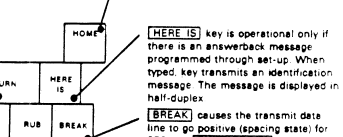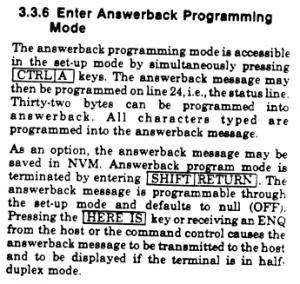In September i’ll be speaking about Go at events in Russia and Taiwan.
DevFest Siberia 2017, September 23rd and 24th
I’ve been accepted to give two presentations at the GDG Novosibirsk DevFest Siberia 2017 event in Russia.
High performance servers without the event loop
Conventional wisdom suggests that the key to high performance servers are native threads, or more recently event loops. Neither solution is without downside. Threads carry a high overhead in terms of scheduling cost and memory footprint. Event loops lessen those costs, but introduce their own requirements for a complex callback driven style.
Go is a general purpose programming language in use in a wide range of domains and is well suited to writing network software. Go was introduced in 2009 with the explicit goal of helping programmers write programs that could solve problems of Google’s scale, and that means writing high performance servers.
This talk will focus on the features of the Go language and runtime environment, that allow programmers to write simple, high performance network services without resorting to native threads or event loop-driven callbacks.
Workshop: Exploring the Go execution tracer
As a complement to my conference talk I’ll be teaching a workshop on the Go execution tracer. This workshop follows on from my GolangUK presentation from last year and my High Performance Go workshop, and specifically focuses on the Go execution tracer,
The execution tracer is a new profiling and tracing facility integrated into Go since version 1.5. Unlike “external” profiling tools like pprof, valgrind, or perf, the execution tracer is integrated directly into the Go runtime, giving it detailed knowledge of the scheduler, the network poller, and the garbage collector.
In this workshop I will explain the operation of the execution tracer, how to collect, then analyse, the results of a trace. The audience will step through a set of problems, framed as the trace output of unknown programs to learn how to interpret the results from the execution tracer, improve our code to address performance or scalability bottlenecks, and verify the results.
You can find more information and purchase tickets for the event at the DevFest 2017 website.
Go Taiwan Meetup, Taipei, September 26th
I’ll be visiting the Go meetup in Taipei, Taiwan on the 26th of September. You can find details of the meetup soon on the GolangTW website.
В сентябре я расскажу о Go на мероприятиях в России и Тайване.
DevFest Siberia 2017, Новосибирск, 23-24 сентября
Оргкомитет конференции DevFest Siberia 2017, которая пройдет в Новосибирске (Россия), принял мои заявки на два выступления.
Высокопроизводительные серверы без цикла событий
Бытует мнение, что ключом к написанию высокопроизводительных серверов является использование собственных потоков (native threads), место которых в последнее время занимают циклы событий (event loops). Однако, у обоих этих решений есть свои недостатки. Потоки, с точки зрения затрат на планирование и объем памяти, несут высокие накладные расходы. Циклы событий уменьшают эти затраты, но ставят определенные требования к витиеватым принципам разработки, основанной на callback’ах.
Go – это универсальный язык программирования, который используется в широком диапазоне областей и отлично подходит для написания сетевого программного обеспечения. Go был представлен в 2009 году, его цель – помочь разработчикам писать программы, которые могли бы решать задачи масштаба Google, то есть задачи написания высокопроизводительных серверов.
В этом докладе будут рассмотрены особенности языка и среды выполнения (runtime) Go, которые позволяют программистам писать простые высокопроизводительные сетевые сервисы, не прибегая к собственным потокам или callback’ам, связанным с циклом событий.
Мастер-класс: Изучаем трассировщик выполнения Go
В качестве дополнения к докладу я проведу мастер-класс по трассировщику выполнения (execution tracer) Go. Этот мастер-класс вытекает из моего доклада «Семь способов профилирования программы, написанной на Go» с прошлогодней конференции GolangUK и из моего мастер-класса «Высокая производительность Go». Новый мастер-класс фокусируется на трассировщике выполнения Go.
Трассировщик выполнения – это новое средство профилирования и трассировки, интегрированное в Go, начиная с версии 1.5. В отличие от «внешних» инструментов профилирования, таких как pprof, valgrind или perf, трассировщик выполнения интегрируется непосредственно в среду выполнения Go, предоставляя подробные сведения о планировщике (scheduler), сетевом поллере (network poller) и сборщике мусора (garbage collector).
В рамках мастер-класса я объясню, как работает трассировщик выполнения, и расскажу о том, как собрать, а затем проанализировать результаты трассировки. Шаг за шагом участники пройдут через набор задач, оформленных как вывод трассировки неизвестных программ, и узнают, как интерпретировать результаты трассировщика, улучшить код, устранить узкие места производительности или масштабируемости и проверить результаты.
Найти больше информации и приобрести билеты можно на сайте DevFest Siberia 2017.
Go Taiwan Meetup, Тайбэй, 26-е сентября
Я приеду на Go-митап в Тайбее (Тайвань) 26-го сентября. Детали мероприятия скоро появятся на сайте GolangTW.


